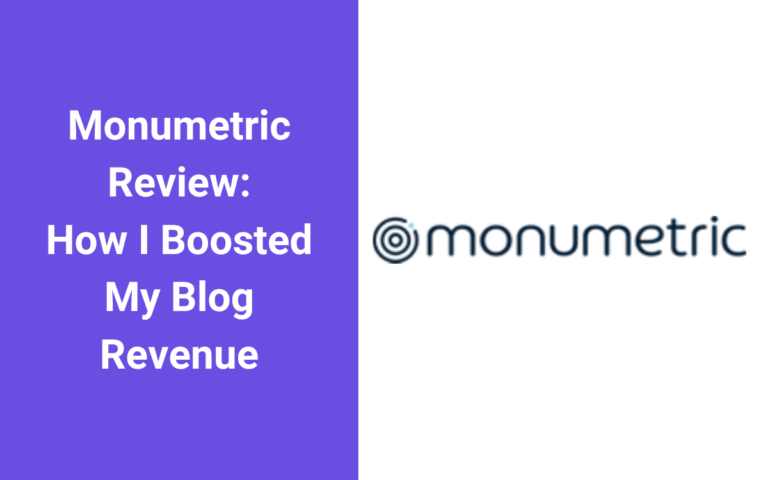The Best Pinterest Marketing Courses for Bloggers (2021): A Firsthand Review
This post may contain affiliate links. See my disclosure for more info.
As a new Pinterest user and online course junkie, I decided to go in search of the best Pinterest marketing course for bloggers to help me in my quest to generate a new stream of traffic to my small audio transcription blog.
To date, 90 percent of my website’s traffic has come from Google. Thanks to one or two fairly aggressive algorithm updates over the past few months, I’ve begun to be a bit leery about relying on Google as my only traffic source. I’ve heard a lot of successful bloggers say Pinterest is the absolute best way to grow a new blog relatively quickly, so I decided it’s time to diversify.
I’m excited to say I recently launched my first Pinterest marketing campaign, and I’m looking forward to seeing how it goes. In the meantime, today I’m sharing two of my favorite Pinterest marketing courses while my memory of them is fresh.
The two courses I’ll be reviewing in this post are:
- The Pinterest Launch Plan ($27) by Jennifer Maker Marx, a DIY and craft blogger at jennifermaker.com
- Making Pinterest Possible ($45) by Ana Skyes of The She Approach, a blog for bloggers and affiliate marketers
Both courses have been around for a couple of years and have had updates added, and the material is still relevant as of late 2020.
Why I Recommend These Pinterest Marketing Courses
Over the past couple of years, I’ve taken four or five Pinterest marketing courses for bloggers. What stood out to me most about the above two courses (apart from being two of the lowest-priced Pinterest courses out there) is that they were written by high-profile bloggers who are using Pinterest to drive tons of traffic to their businesses, as opposed to a Pinterest rep simply explaining the features of the platform.
Both courses teach a Pinterest strategy that can be done with or without a Pinterest scheduling tool like Tailwind, so if you’re set on manual pinning, don’t worry – these aren’t Tailwind courses; they’re Pinterest strategy courses.
The other reason I’m recommending these two courses is because they are two of the lowest-priced Pinterest courses out there. Not only that, but the strategies in the course can be applied for free. You won’t need any money to promote pins. As for pin design, you can do that for free in Canva.
I’ll be updating this post in the future with my Pinterest marketing results, so stay tuned. And if you’re reading this, I assume you’re either on Pinterest already, or about to be. So if you enjoy work-from-home content, make my day and follow me on Pinterest at follow me on Pinterest at @opaltranscripts. I need some friends!
The Pinterest Launch Plan Course Review
The Pinterest Launch Plan course, by DIY and craft blogger Jennifer Maker, is hosted on the Teachable platform. You can download the ebook section of the course and read it offline.
The course consists of three main sections:
1. The Great Pinterest Experiment case study and data files.
When Jennifer noticed she was having great success using Pinterest to drive traffic to her main blog, she wondered if it was just luck or if she could take the same strategy she was using and apply it to grow other blogs with the same level of success.
So she tested her Pinterest strategy for one month on a brand-new blog about a brand-new topic with a brand-new Pinterest account in “The Great Pinterest Experiment,” and – spoiler – it worked!
The screenshots below show the new blog’s traffic after Jennifer applied her Pinterest marketing strategy over a period of four weeks. As you can see, the traffic is trending steadily upward:

She generated 5,447 sessions to this brand-new blog with a Pinterest account that had started out with zero followers. (She even used a fake photo of herself on the new blog so no one would know it belonged to her.)
Jennifer began her experiment with 14 posts she had written for the brand-new site, and that’s what she recommends that you do if you want to replicate her results as closely as possible. (Personally, I launched my Pinterest marketing strategy with just seven posts because I didn’t see the point of delaying – but obviously, the more content you have that Pinterest users are interested in, the more exposure you’ll get initially.)
The best part is that Jennifer tracked EVERYTHING along the way – the tasks she did each day, her Pinterest account stats, what she pinned and how often and where, group boards she was accepted to, and, of course, the most important metric – traffic to her blog!
The Pinterest Launch Plan course includes all of the data files from The Great Pinterest Experiment. So if you find Pinterest confusing or overwhelming, or if you don’t have the inclination to sit down and create a custom pinning schedule, you can basically just copy what Jennifer did for each day of the experiment and substitute your own blog posts and pins.
You can also use her spreadsheets as templates for tracking your own Pinterest launch so you can continue to optimize your blog’s growth based on your top-performing pins. (To me, tracking my pinning schedule manually just seemed way too time consuming, so I signed up for a free trial of Tailwind right from the start.)
For me, the Great Pinterest Experiment case study was a highly valuable addition to the course. It proves that Jennifer’s Pinterest strategy works for new blogs in other niches. And aside from being useful, it’s inspiring to see someone create a brand-new blog and Pinterest account from scratch and generate several hundred daily sessions in just a few weeks.
2. The Pinterest strategy itself, in ebook format.
The ebook contains the Pinterest strategy that is really the meat and potatoes of this course. It covers the 10 steps you need to follow to set up your Pinterest account and begin generating lots of traffic to your blog.
While the course is comprehensive, I found the chapters themselves to be neatly put together and not at all overwhelming. Each chapter concludes with a few simple action steps, so you’re never left wondering what to do next.
According to Jennifer, initial setup of your launch plan can be implemented over the course of a couple of days. But, she says, once you have everything set up, you’ll still need to put in some regular maintenance work for several weeks or months before you can expect to see real success. This is especially true if you’re planning to pin manually instead of using a scheduler like Tailwind.
The pros and cons of Pinterest automation is a topic of much debate among bloggers. Pinterest reps themselves have said that using a scheduler doesn’t negatively impact your pinning, but if you’re worried, you can always log into Pinterest and do some manual pinning each day.
Jennifer uses a combination of Tailwind automation and manual pinning to drive traffic to her own blog. I have decided to use Tailwind for the majority of my Pinterest marketing strategy, but I’m going to test live pinning a few times each day to see whether it makes a difference.
Regardless of whether you choose to automate your pinning, you’ll still need to create new pin designs regularly – and, ideally, new blog posts as well – to see long-term success with this Pinterest strategy.
3. Extra video content.
The Pinterest Launch Plan includes several hours of optional video content, including:
- Technical walkthroughs, such as how to claim your website and install Google Analytics
- Setting up and optimizing your Pinterest account
- How to find and join group boards
- Scheduling your content using Tailwind
To sum up, The Pinterest Launch Plan is a comprehensive, yet concise, course that covers Pinterest marketing strategy from A to Z. Therefore, I recommend this course to people who are new to using Pinterest for business. That said, Jennifer is clearly having a lot of success with her strategy, and seasoned Pinterest users are likely to find some useful tips in the course as well.
Making Pinterest Possible Course Review
The second Pinterest marketing course for bloggers I’m reviewing today is called Making Pinterest Possible, by Ana Skyes of The She Approach.
Ana has implemented many strategies to grow her blog, but as she states in her course, “the one that paid off the most was Pinterest.” In the screenshot below, you can see how her blog traffic took off when she started to use Pinterest:

Ana’s Pinterest course is delivered in e-book format. It consists of two main sections:
1. Ana’s step-by-step Pinterest strategy.
At 179 pages long, this ebook isn’t exactly a quick read. In fact, in some places, it was almost a little too detailed (because I was excited to get started!).
Like the Jennifer Maker course, Making Pinterest Possible is laid out in a logical step-by-step fashion. There are typically a few more action steps included at the end of each chapter than the Jennifer Maker course.
The ebook contains plenty of annotated screenshots showing readers how to actually navigate the Pinterest platform, which will be especially helpful for readers who struggle with the technical side of things.
The chapter on pin design goes into a lot of detail about what makes a great pin and includes visual examples of attention-grabbing pins, as well as the importance of branding and good pin copy.
Like the Jennifer Maker course, this course isn’t a Tailwind course, and you can do it all manually if you want. That said, Ana isn’t shy about recommending Pinterest automation to save yourself a lot of time and hassle. She quotes in her ebook: “… I’m going to come out and say it, because a Pinterest manager confirmed it: there are no added benefits to manual pinning! Scheduled pins and manually pinned ones are treated the same by Pinterest, and spending extra time in the app doesn’t matter to Pinterest.”
She adds: “… manually pinning could be less effective when sharing your own content, because repins have less value than fresh pins. And a little-known fact about Tailwind, the official Pinterest scheduler, is that they don’t have permission to repin, so every time you schedule the same pin to 30 boards, for example, it counts as 30 fresh pins!”
So if you are planning to use a scheduler, you’ll be glad that the course goes into a lot of depth about features in Tailwind, including the optimized pinning schedule, board lists, Smart Loop, and Tailwind’s own analytics, which are more detailed than the analytics in Pinterest itself.
The course also has a section on how to use Tailwind Tribes, which are even better than group boards for exploding your growth on Pinterest. Tailwind Tribes are communities of pinners on the Tailwind platform that help each other out based on reciprocity – for example, if you add three of your own pins to the tribe to be repinned, then you return the favor by sharing three pins belonging to other members of your tribe.
Since curating relevant content is part of a good Pinterest strategy anyways, this is an easy way to do it while ensuring that your own pins get plenty of engagement. It’s also a good way to build relationships with top bloggers in your niche.
Besides the advantages Ana cites above, here are a few more reasons you might want to use Tailwind:
- Tailwind is an official Pinterest Partner, so you won’t be penalized for using it to automate your pinning.
- It instantly generates an optimized pinning schedule for you based on when users in your niche are most active, so you don’t have to bother with creating a perfect pinning schedule or spend hours pinning to all your relevant boards. Ana says Tailwind saves her on average about 288 hours of extra work per year.
- It tracks all your Pinterest activity (goodbye spreadsheets!).
- The Smart Loop feature lets you recycle your evergreen and best-performing content, ensuring you stay active on Pinterest and that none of your previously published content goes to waste.
2. Pinterest marketing success stories from successful bloggers.
Making Pinterest Possible concludes with a selection of 14 Pinterest success stories from bloggers in a variety of niches. These bloggers share some interesting numbers directly from their analytics, as well as gems of advice such as:
- Whether they automate their pinning using a scheduler, or pin manually
- How long it took for their Pinterest marketing efforts to become successful
- The Pinterest tip that’s most responsible for their success
These firsthand accounts and real data demonstrate that every blogger’s Pinterest marketing strategy is going to be a little different and that what works for one niche or one blogger might not work for others. I was struck by what’s possible in a short time with Pinterest marketing when you have a strategy.
All in all, this final section of the ebook takes an already comprehensive course and makes it extra valuable for people who want to skip the learning curve and maximize their success on Pinterest right from the start.
So which of these two Pinterest courses for bloggers do I recommend?
If you’re ready to launch your Pinterest marketing strategy as quickly as possible using a proven strategy and solid action steps – or if you prefer video walkthroughs to text – then you’ll enjoy The Pinterest Launch Plan, which covers all the bases without being too overwhelming.
If you have a bit of extra time to dig into a Pinterest course and you want all the extra info you can get, then Making Pinterest Possible will be right up your alley. Additionally, if you’re interested in automating your pinning using Tailwind, then you’ll get a lot out of this course.
Other Resources for New Pinners
- Canva – a free platform for designing pins quickly and easily, even if you have no graphic design experience
- Depositphotos – a more affordable stock photography site for creating pins that stand out
Do you have an awesome Pinterest marketing course for bloggers that you want to recommend? I’d love to hear about it – send me an email or leave a comment!






